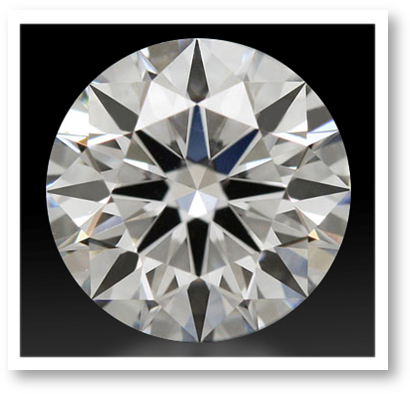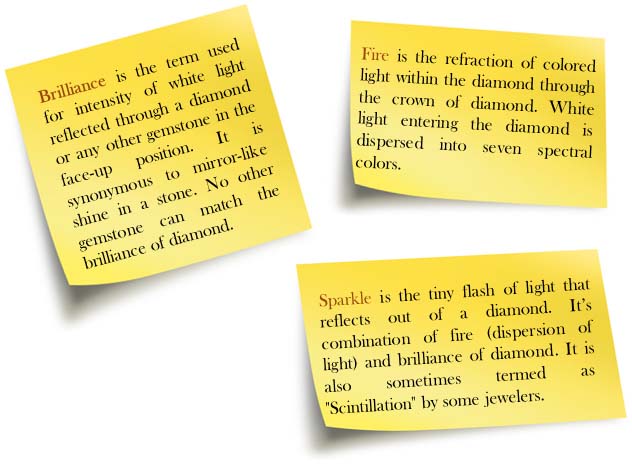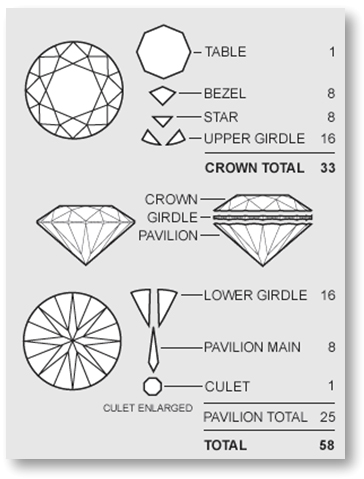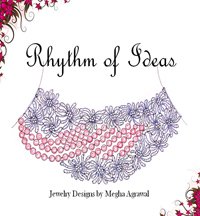Diamond Facets - Facets in a Round Brilliant Cut Diamond
While the diamond facets count is standard and universally agreed, the actual proportions (crown height and angle, pavilion depth, pavilion angle, and table size) have different versions.
Over the period of different types of round brilliant cuts have evolved. The modern "Round Brilliant Cut" was developed by diamond-cutter Marcel Tolkowsky in 1919.
What is Brilliant Cut diamond?
Well, according to GIA guidelines, diamonds cuts are classified under 3 basic categories, i.e. - brilliant cut, step cut and mixed cut. In a brilliant cut diamond, facets are arranged in such a manner that they appear radiating outward.
Due to this facet arrangement, brilliant cut stones have more sparkle compared to step and mixed cuts. Further, round is the most common shape where brilliant cut style is incorporated. This article is about facets arrangement of modern round brilliant cut which is the most common and popular diamond cut.
Round Brilliant Cut Diamond
How many facets does a diamond have?
"Facet" is the term used for a flat part (surface between edges) of a cut and polished diamond. The modern round brilliant - popularly known as the "Tolkowsky Cut" or "Tolkowsky Brilliant" - consists of 58 facets (or 57 if the culet is excluded), 33 on the crown (the top half above the middle or girdle of the stone), and 25 on the pavilion (the lower half below the girdle).
The girdle may be polished smooth, or faceted. In recent times girdles are generally faceted; many have 32, 64, 80, or 96 facets. These facets are however excluded from the total facet count.
You may find small extra diamond facets on the crown or pavilion, which are created to remove inclusions during the diamond cutting process. These extra facets may affect the overall facets symmetry of the stone and is taken into consideration while cut grading.
Facets should be aligned in such a manner that they enhance the reflection of light through diamond. The symmetry, depth and size of facets affect the brilliance and sparkle of diamond. Facets also affect the lifespan of diamond.
Facets of a Diamond
As listed below, diamond facets are generally named according to their location on different parts of the stone.
- Table Facet - It’s the top-most facet of the diamond and is named after its location (located on table). In a round brilliant cut diamond, table facet has octagonal shape. It is through this facet that incident light is reflected back. Thus it’s the most important facet of the diamond as it affects the diamond’s brilliance and sparkle.
- Star Facets - Just after table facet are the 8 star facets. These facets are named Star because when the diamond is seen from top, these facets form an eight point star.
- Kite/Bezel/Upper Main or Crown Facets - Just after star facets are 8 kite facets. The position of these facets extends from the table to the girdle of the diamond. These facets are shaped like a four-sided kite that’s why termed as Kite facets. Also, since they are positioned on crown, they are also called crown facets.
- Upper Girdle Facets -These facets are located between kite facets and girdle. Since these facets are positioned on the upper side of the girdle, they are called Upper Girdle facets. These facets are 16 in number.
- Pavilion Facets or Arrow Facets -These facets can be seen when diamond is placed in table-down position. There are 8 Pavilion facets located on underside of diamond. These facets connect from under the girdle. Since positioned on pavilion they are termed Pavilion facets. These facets are also termed as Arrow because of their shape.
- Lower Girdle Facets - These facets can be seen when diamond is placed in table down position. There are 16 lower girdle facets located on the underside of diamond connected with pavilion facets. These facets are termed so because of their position on the lower side of girdle.
- Culet Facet - The culet refers to the "point" at the bottom, which is actually not a point but a tiny facet. It can be said as the lower-most facet when diamond is viewed from sideways.
Return from Facets of Round Brilliant Cut to Cuts of Diamond page
Return from Facets of Round Brilliant Cut to Diamond Jewelry Homepage
I hope you'll not mind sharing this on Twitter, Facebook and with everyone else :)
Feel free to share if something is in your mind and want it to be covered on this site.
My Newsletter
Did you liked this article? Sign-up my FREE weekly newsletter and I'll send you more awesome new additions on this website along with latest jewelry happenings around the world, and download my Jewelry Design Album for FREE!
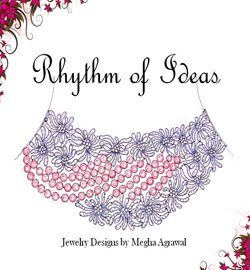 |
|
